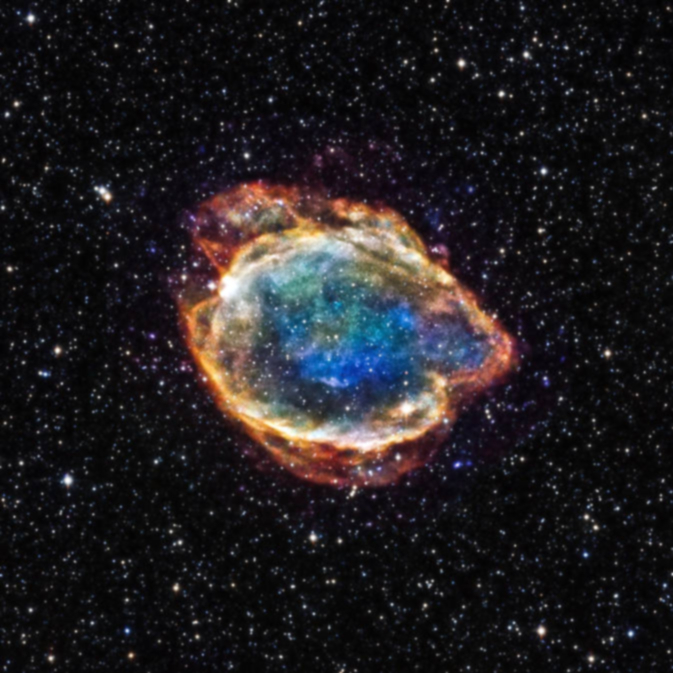
 Credit: NASA/CXC/U.Texas
Credit: NASA/CXC/U.Texas
Why Not Round?
Stars like the sun produce most of their energy by fusing protons into helium nuclei in the center of the star, where densities and temperatures are hot enough to overcome the electric repulsion of the positively-charged protrons. After billions of years, all the available protons have been converted into helium. But if the star is massive enough, the core may be able to achieve high enough temperatures that, for a short time, helium nuclei can be fused into carbon. If the temperature in the core stays below the 500 million degrees needed to fuse carbon, then the star ends its life by losing its outer layers, to form an extended shell of gas called a planetary nebula, while the core of the star is left as a cooling, earth-sized ball of carbon called a white dwarf. White dwarfs are ticking time bombs, since, if they gain enough mass (by stealing it from a companion star, merging with another white dwarf, or accreting it directly from the interstellar medium), they will collapse, causing a near-instantaneous fusing of all the carbon they contain. The resulting outburst of energy from this carbon catastrophe produces a galaxy's worth of energy. These explosions, called Type Ia supernovae, are loved by astronomers because they are not only bright, but they are "standard candles", since they all generate the same amount of energy and so can be used to measure the size and geometry of the Universe. But how does this explosion actually happen? Thermonuclear burning of a spherical ball of carbon should produce a symmetric, spherical explosion. But a new observation of a Type Ia supernova called G299.2-2.9 by the Chandra X-ray Observatory shows that this simple picture may be too simple. The Chandra image of G299 is shown above, along with an infrared image showing the star field around the supernova. In this image, low-energy X-rays are shown in red, medium energy X-rays in green, and high-energy X-rays in blue. The shape of the X-ray emitting gas produced by the explosion is noticeably asymmetric. In addition, the exploded material also has a different chemical makeup in different directions as well. This may mean that the explosion occurred in a highly structured environment, perhaps shaped by the outpouring of material lost from the star in the planetary nebula stage. Or this may mean that, for some fundamental reason, the explosion itself was more powerful in one particular direction. If this is the case, this may offer important clues about how the carbon catastrophe occurs.
Published: February 16, 2015
<
HEA Dictionary ● Archive
● Search HEAPOW
● Other Languages
● HEAPOW on Facebook
● Download all Images
● Education ● HEAD
>

Each week the HEASARC
brings you new, exciting and beautiful images from X-ray and Gamma ray
astronomy. Check back each week and be sure to check out the HEAPOW archive!
Page Author: Dr. Michael F. Corcoran
Last modified Monday, 26-Feb-2024 17:45:30 EST


